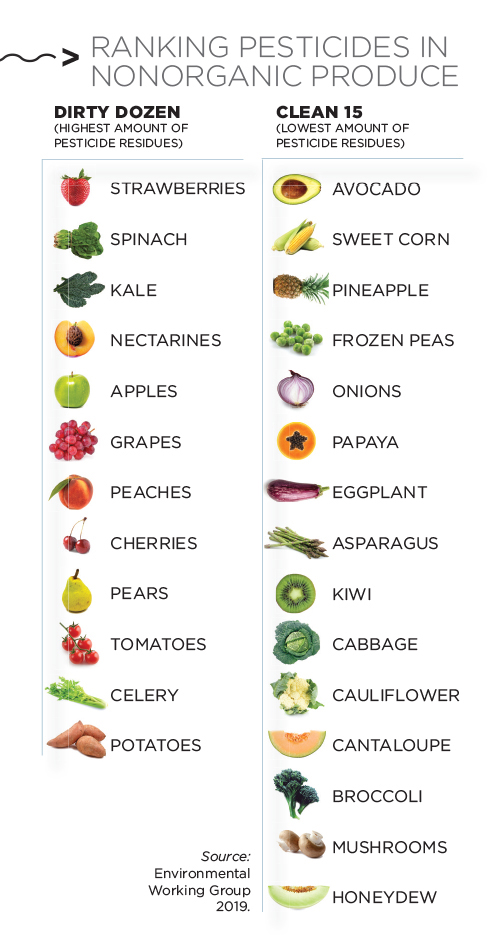Pesticides and Produce
Does it matter if traces of pesticides are on your fruits and vegetables?
| Earn 1 CEC - Take Quiz

The eco-minded nonprofit Environ┬¡mental Working Group recently released this year’s update to its popular Shopper’s Guide to Pesticides in Produce™. Their Dirty Dozen™ list ranks conventionally grown fruits and vegetables that, according to their analysis of available data, tend to contain the highest concentration of pesticides and/or the greatest number of different pesticides. For instance, more than 90% of kale samples had two or more pesticide residues. Alongside is a Clean 15 list that ranks nonorganic produce with the lowest levels of pesticide residues.
The report says, “The health benefits of a diet rich in fruits and vegetables outweigh the risks of pesticide exposure.” However, the authors warn that, according to the American Academy of Pediatricians Council on Environmental Health, “pesticide exposure during pregnancy and early childhood increases the risk of brain tumors, leukemia, neurodevelopmental defects and other adverse birth outcomes” and that “even low levels of pesticide exposure can be harmful to children.”
Matthew Kadey, MS, RD
Matthew Kadey, MS, RD, is a James Beard Award–winning food journalist, dietitian and author of the cookbook Rocket Fuel: Power-Packed Food for Sport + Adventure (VeloPress 2016). He has written for dozens of magazines, including Runner’s World, Men’s Health, Shape, Men’s Fitness and Muscle and Fitness.





